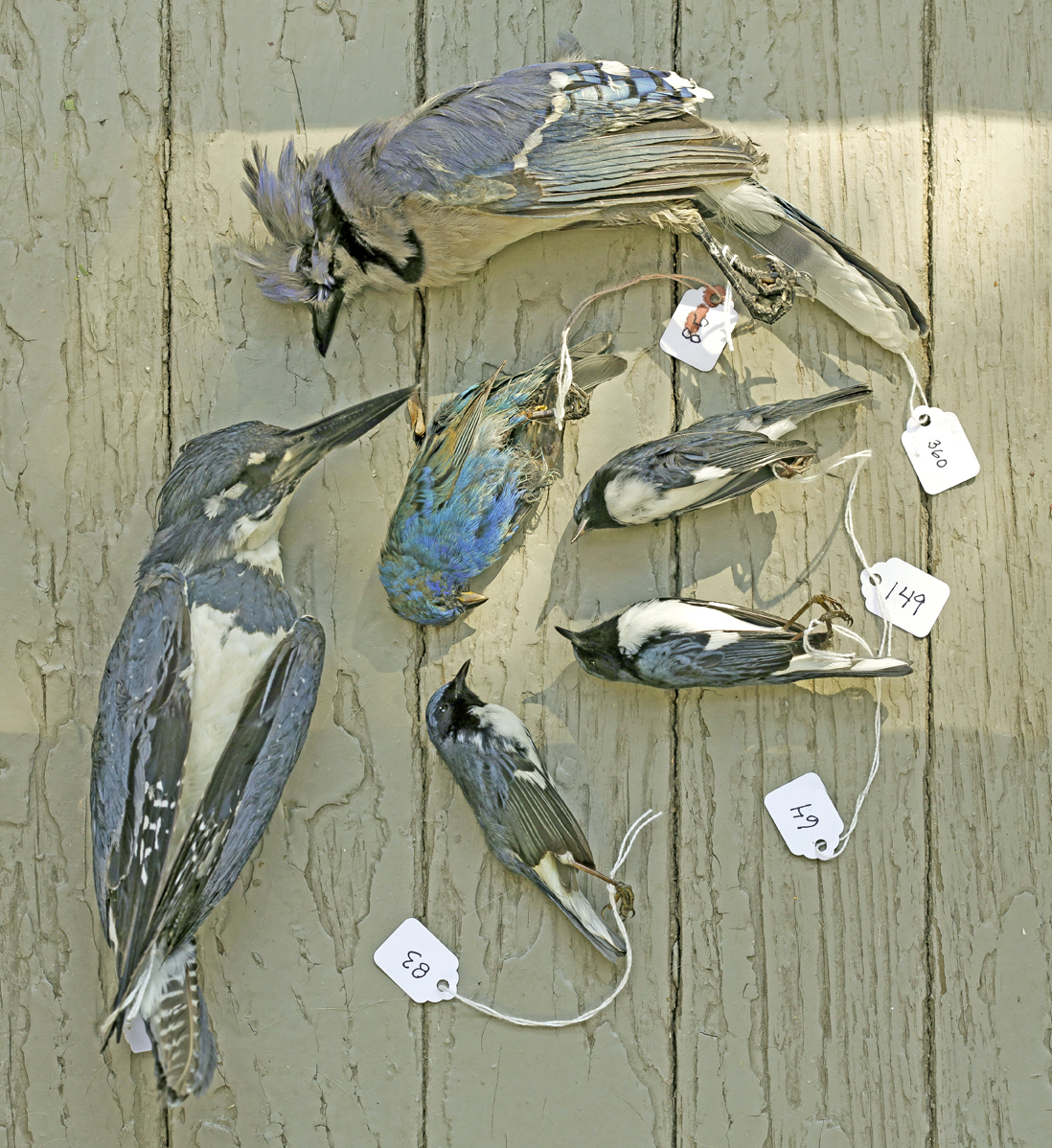 |
| Birds killed by one building in Washington DC, USA, in November 2014 (clockwise from left: Belted Kingfisher, Blue Jay, Indigo Bunting and three Black-throated Blue Warblers). Photo: USGS Bee Inventory and Monitoring Lab (commons.wikimedia.org). |
About one billion birds are killed every year in North America by flying into human-made structures – but new research has found that rural buildings cause the most deaths.
Large objects such as buildings with reflective windows are the largest unintended human cause of bird deaths worldwide, and they are a serious concern for conservationists. A new paper published in June in the journal Biological Conservation found that, as one might suspect, smaller buildings cause fewer bird deaths than bigger ones. But the research team of about 60 – including three co-authors with the University of Washington (UW) – also discovered that larger buildings in rural areas pose a greater threat to birds than if those same-sized buildings were located in urban locations.
Researchers monitored 300 buildings of varying size and environmental surroundings for bird mortality at 40 college and university campuses in North America in the autumn of 2014, including six buildings on the UW's Seattle campus. They designed a standardised monitoring protocol so that the field crews documented bird mortality uniformly. They recorded 324 bird carcasses of 41 species, while up to 34 birds met their demise at each site.
"Consistent with previous studies, we found that building size had a strong positive effect on bird-window collision mortality," Hager and team wrote in a statement about the continent-wide research. "But the strength of the effect on mortality depended on regional urbanisation."
The team thinks this might be related to how birds select habitats during migration, as well as differences in bird behaviour between urban and rural populations. For example, forest-adapted birds often select rural habitats with lots of open space and fairly few impervious surfaces over more urban areas.
Lighting patterns may also play a part, researchers added. Lights from large, low-rise buildings in rural areas may attract migrating birds in what the team dubbed a "large-scale beacon effect", while this effect may be "more diluted among large buildings in urban areas."
Another theory is that urban birds may actually learn from non-fatal collisions and gain "new anti-collision behaviours" that help them avoid colliding with windows in built up areas. Previous research, they note, "suggests that the relatively large brain size in birds makes them primed for learning."
The results suggest, the authors write, that measures taken to prevent bird collisions "should be prioritised at large buildings in regions of low urbanisation throughout North America."
Reference
Hager, S B, et al. 2017. Continent-wide analysis of how urbanization affects bird-window collision mortality in North America, Biological Conservation 212: 209-215. DOI: 10.1016/j.biocon.2017.06.014.

